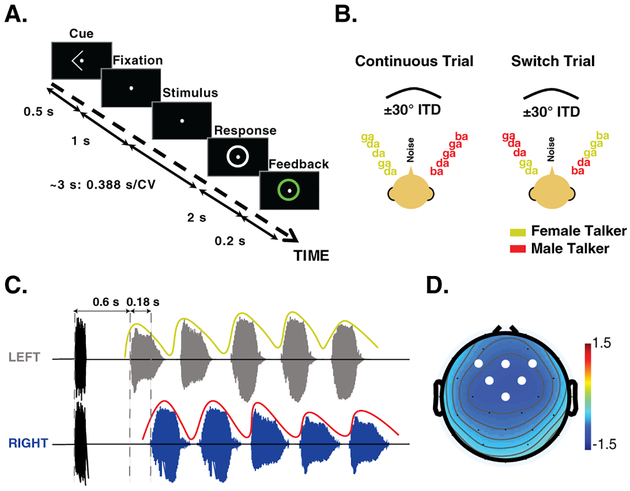Figure 1:
(A) Trial design. Each trial started with a visual cue to indicate the side to be attended. The cue was followed by a fixation dot at the center of the screen, then the stimulus presentation. Following the stimulus, the response screen was shown, prompting the listener for a response. Feedback was provided on each trial. (B) Two streams of CV were presented on each trial, one spoken by a male and the other by a female speaker. The streams were separated using interaural time differences corresponding to approximately ± 30°. In the continuous trials, the talker at each location remained the same. In contrast, in the switch trials, the two talkers swapped locations in the third CV presentation. (C) The stimulus timing was designed to allow isolation of the ERPs for each CV. The trial began with a noise-burst, indicated in black, followed by the start of the leading/target stream. The lagging/masker stream began 0.18 s after the leading stream, creating an asynchrony in the CV onsets. The colored envelope superimposed on the plot represents the talker at that location. (D) Scalp topography of the N1 response to the first target CV. White circles indicate the electrodes used for ERP analysis.

